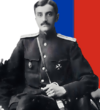Petersburg
This article is incomplete because it is pending further input from participants, or it is a work-in-progress by one author. Please comment on this article's talk page to share your input, comments and questions. Note: To contribute to this article, you may need to seek help from the author(s) of this page. |
Petersburg, Alaska
Петербург | |
|---|---|
CDP | |
| City of New Saint Petersburg | |
 August in New Saint Petersburg c.1918 | |
| Established | 1899 |
| Incorporated | 1910 |
| Government | |
| • Mayor | Håkon Carlsen |
| Population (1930) | |
| • Total | 2,042 |
| Time zone | UTCUTC-9 (Alaska) |
| • Summer (DST) | UTCUTC-8 (Alaska) |
Petersburg (Tlingit: Gantiyaakw Séedi "Steamboat Channel"; Russian: Петербург) is a census-designated place (CDP) at the north end of Mitkof Island in the Governorate of Alaska.
History
European explorers to Mitkof Island encountered the Tlingit. In the nineteenth century, Peter Buschmann, a Norwegian immigrant, settled here, building a cannery, sawmill, docks and early structures. The settlement was named Petersburg after him, and it flourished as a fishing port. Icebergs from the nearby LeConte Glacier provided a source for cooling fish.
Petersburg originally incorporated as a town on April 2, 1910. The town had attracted mostly immigrants of Scandinavian origin, thus giving Petersburg the nickname "Little Norway". The Sons of Norway hall was built on one of the piers. Three other canneries were built and the four have operated continuously since. With the establishment of the cannery, Alaskan Natives, including Chief John Lott, began to work there and live year-round at the site.[1]
